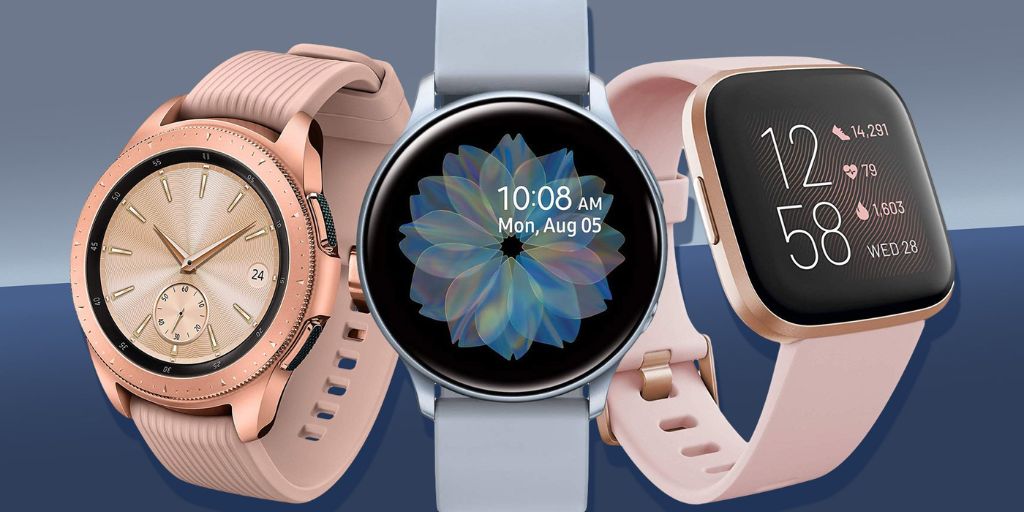In a world where technology seamlessly blends with daily life, wrist-worn gadgets have become go-to tools for health, productivity, and communication.
Two categories dominate this space: smartwatches and fitness trackers. At first glance, they seem similar—both monitor your steps, calories, and heart rate—but they serve different purposes and offer varying levels of features, price, and design.
If you’re looking to buy a wearable but aren’t sure which device best suits your needs, this article breaks down the key differences, benefits, and best use cases for each. Let’s dive in and help you decide whether a smartwatch or a fitness tracker is the better investment.
What Is a Smartwatch?
A smartwatch is essentially an extension of your smartphone. It delivers notifications, enables app access, controls media, and often includes voice assistants, GPS, and mobile payments. Most smartwatches also include health-tracking features, but their primary strength lies in connectivity and versatility.
Examples: Apple Watch Series, Samsung Galaxy Watch, Google Pixel Watch
What Is a Fitness Tracker?
A fitness tracker, also called an activity band, is designed primarily to monitor health and wellness. These devices focus on tracking steps, heart rate, sleep, calories burned, and sometimes include features like blood oxygen monitoring and guided workouts. They’re typically lighter, simpler, and have longer battery life than smartwatches.
Examples: Fitbit Inspire, Garmin Vivosmart, Xiaomi Mi Band
Feature Comparison: Smartwatch vs Fitness Tracker
Let’s break it down across key categories:
1. Health and Fitness Monitoring
Fitness Trackers:
-
Focus almost entirely on health data: steps, calories, distance, heart rate, sleep, etc.
-
Some models include blood oxygen levels (SpO2), menstrual tracking, and guided breathing.
-
Advanced trackers (like Fitbit Charge 6 or Garmin Vivosmart) offer VO2 max estimates and stress tracking.
Smartwatches:
-
Include most fitness tracking features—but more high-end models (like the Apple Watch or Samsung Galaxy Watch) may go further with ECG monitoring, fall detection, or temperature tracking.
-
They are more accurate for GPS-tracked activities and running metrics due to built-in sensors.
Verdict: If health and activity tracking is your top priority, a fitness tracker often delivers better value and longer-lasting battery for the same data. However, if you’re into comprehensive fitness tracking with medical-grade extras, a premium smartwatch wins.
2. Battery Life
Fitness Trackers:
-
Typically last 5 to 14 days on a single charge.
-
Some simple models like the Xiaomi Mi Band last up to 20 days.
Smartwatches:
-
Most require daily or every-other-day charging.
-
Models with always-on displays and LTE (like Apple Watch) last 18–36 hours.
Verdict: For travelers, hikers, or anyone who dislikes charging often, fitness trackers clearly take the lead.
3. Smart Features and App Integration
Smartwatches:
-
Can show texts, emails, calendar events, and even allow replies.
-
Enable voice assistants (Siri, Google Assistant, Alexa).
-
Offer contactless payments (Apple Pay, Google Pay, Samsung Pay).
-
Support third-party apps (Spotify, WhatsApp, Uber, etc.)
Fitness Trackers:
-
Limited smart features; some models may offer call or text notifications but often with no reply function.
-
Rarely support full app ecosystems or music streaming.
Verdict: If you want your wristwear to replace your phone in small ways, a smartwatch is the way to go.
4. Design and Comfort
Fitness Trackers:
-
Slim, lightweight, and unobtrusive—ideal for all-day and overnight wear.
-
Generally sportier, with fewer premium material options.

Smartwatches:
-
Larger and more stylish, with customizable watch faces and premium bands (leather, stainless steel, etc.).
-
Some users find them bulky for sleep tracking or intense workouts.
Verdict: If you value minimalist wearability or want a device that feels invisible on your wrist, a fitness tracker might suit you better. But for style-conscious users, smartwatches offer more flair and personalization.
5. Price Range
Fitness Trackers:
-
Typically priced between $40 and $150.
-
Even advanced models rarely go beyond $200.
Smartwatches:
-
Entry-level models start around $200.
-
Premium models (Apple Watch Ultra, Galaxy Watch Classic) can exceed $400–$800.
Verdict: Fitness trackers offer better value for budget-conscious buyers, while smartwatches require more investment for expanded capabilities.
Which One Is Right for You?
Here’s how to choose based on your needs:
✅ Choose a Fitness Tracker if:
-
You primarily want to track steps, workouts, and sleep.
-
You prefer a lightweight and low-profile wearable.
-
You want long battery life with fewer daily charges.
-
Your budget is under $150.
-
You don’t need app support or voice assistants.
Best for: Fitness beginners, casual walkers, minimalist users, kids, or seniors.
✅ Choose a Smartwatch if:
-
You want notifications, apps, and calls on your wrist.
-
You use Apple, Android, or Google ecosystems and want integration.
-
You want high-end health features like ECG or fall detection.
-
Style, screen quality, and media control matter to you.
-
You’re okay charging daily or every other day.
Best for: Tech enthusiasts, professionals, fitness lovers with advanced needs, or anyone who wants a smartphone companion on their wrist.
The Hybrid Option
Some newer devices blur the lines between categories. For instance:
-
Fitbit Charge 6: Offers full Google Maps, YouTube Music controls, and NFC payments—yet looks like a fitness band.
-
Garmin Venu or Vivoactive series: These bring smartwatch looks with long battery life and fitness-first focus.
If you’re torn between the two, these hybrids could give you a best-of-both-worlds solution.
Final Thoughts
Choosing between a smartwatch and a fitness tracker isn’t about which one is better—it’s about which one fits your lifestyle. Do you want a sleek device focused purely on fitness and wellness? Go with a fitness tracker. Want more functionality, connectivity, and wrist-top convenience? A smartwatch is worth the extra cost.
Ultimately, your goals—whether that’s running a marathon, checking texts discreetly, or simply closing your activity rings—should drive your decision. With technology improving across the board, there’s never been a better time to find the perfect wearable for your wrist.



